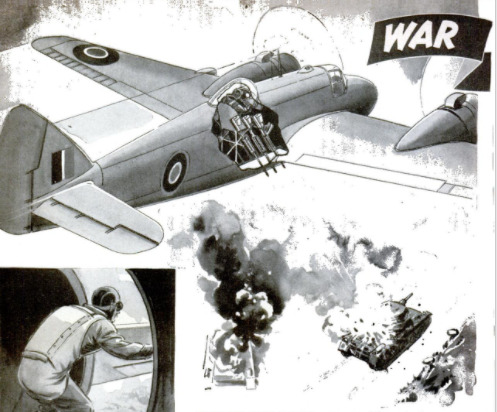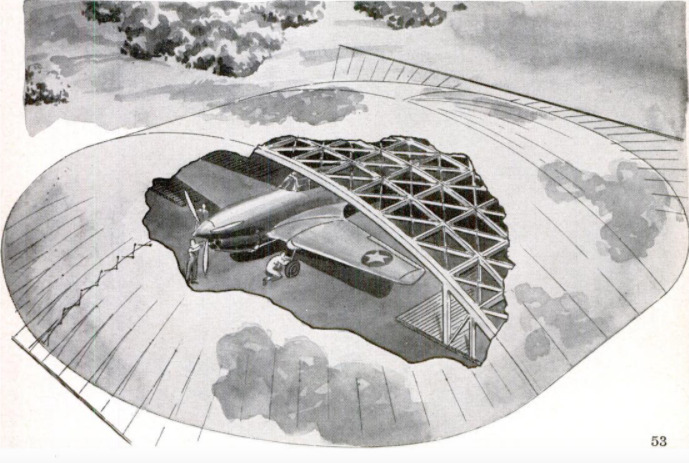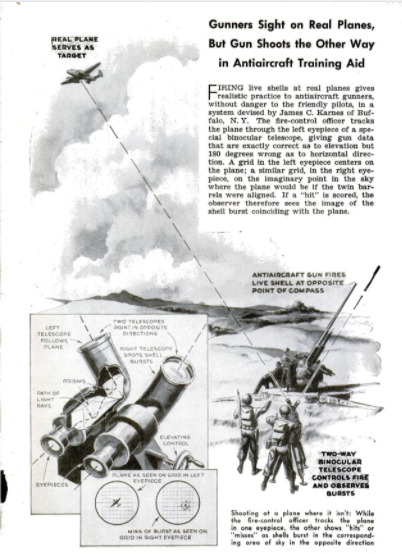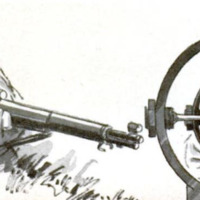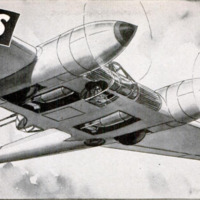War Ideas
Item
-
Title (Dublin Core)
-
War Ideas
-
Article Title and/or Image Caption (Dublin Core)
-
War Ideas
-
extracted text (Extract Text)
-
PARACHUTE JACKETS, replacing the con-
ventional seat and chest packs, are ad-
vocated as less bulky, more comforta-
ble for the wearer, and as a means of
contributing extra warmth through a
revised method of folding. The jackets
are sleeveless, reach to the thighs, and
have a built-in harness.
They should be of special
alue in large aircraft
‘where crews move about.
PLANE TANK-BUSTER CANNON are proposed for such planes
as the British Bristol Beaufighter, which is seeing
much service in the Middle East where Rommel's
tanks are active. A battery of antitank cannon would
be installed in present planes, as pictured above, point-
ing downward so that the plane could fly on an even
keel and rake a tank with heavy fire from end to end.
Other guns, of course, would be retained, and the
plane, despite its highly increased fire power, would
continue to serve its primary purpose as a fighter.
IMPROVED VISION IN SIGHTING FIREARMS is the object of
an invention employing horizontal pins in front and
rear sights. With these projections aligned, as shown,
‘a bead is held on the target, which is visible between,
above, and below the pins.
TWO BOMB COMPARTMENTS are provided in a
newly designed all-wing plane with quarters
for pilot and crew in the central wing sec-
tion, which is of airfoil contour and contrib-
utes to lift as well as housing the load. This
central portion has a maximum height of
51% feet which is reduced to 314 feet on
either side of that part used by the crew.
In addition to its bombing devices, the plane
carries both forward and rear guns—the
latter being capable of full vertical range.
QUICKLY SET UP SINGLE-PLANE HANGARS, easily
camouflaged with their turtle-back design
eliminating shadows, have been patented
here and in England. The arched-rib frame-
work—-steel for large hangars or trussed
wood for small ones—is roomy enough to
accommodate personnel. Its canvas cover-
ing can be drawn back for openings at both
ends. By use of roofs and partitions, the
shelters could easily be adapted to tem-
porary housing for another purpose.
FIRING live shells at real planes gives
realistic practice to antiaircraft gunners,
without danger to the friendly pilots, in a
system devised by James C. Karnes of Buf-
falo, N.Y. The fire-control officer tracks
the plane through the left eyepiece of a spe-
cial binocular telescope, giving gun data
that are exactly correct as to elevation but
180 degrees wrong as to horizontal direc-
tion. A grid in the left eyepiece centers on
the plane; a similar grid, in the right eye-
piece, on the imaginary point in the sky
where the plane would be if the twin bar-
rels were aligned. If a “hit” is scored, the
observer therefore sees the image of the
shell burst coinciding with the plane.
-
Language (Dublin Core)
-
eng
-
Date Issued (Dublin Core)
-
1943-01
-
pages (Bibliographic Ontology)
-
52-54
-
Rights (Dublin Core)
-
Public Domain (Google Digitized)
-
Archived by (Dublin Core)
-
Matteo Ridolfi
-
Marco Bortolami (editor)
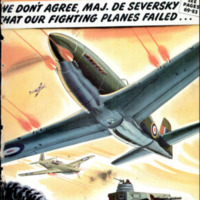 Popular Science Monthly, v. 142, n. 1, 1943
Popular Science Monthly, v. 142, n. 1, 1943

